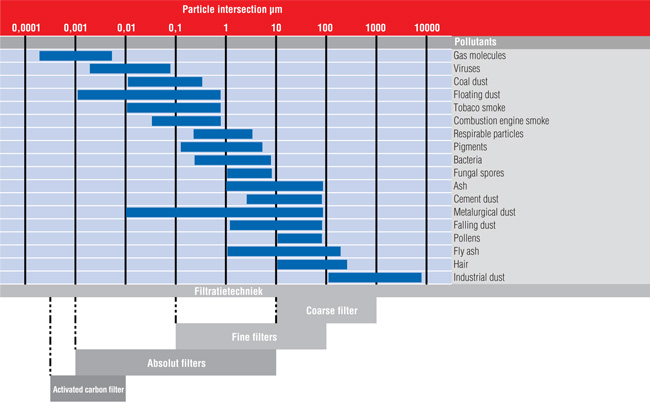The principles of air filtration
There are two basic types of air filter: Filters for solids and filters for gaseous particles. Both types have the same objective, to reduce the concentration of airborne particles. Gaseous particles can be filtered out by means of adsorption. Adsorption is brought about by London dispersion forces, or Van der Waal’s forces, which act between the molecules. These forces have similar of properties to the forces of gravity acting between planets in the solar system. The activated carbon in these filters is capable of removing particles from the air by means of adsorption. Different types of carbon may be used, depending on the particular field of application.

There are four ways of capturing particles. The filter class, the particle size and the filter construction jointly determine the magnitude of the effects.
Air filters may apply:
– the sieve effect
– the inertial mass effect
– the interception effect
– the diffusion effect
The sieve effect
The sieve effect is one most commonly applied in air filters. The principle of the sieve effect is very simple: The particle is larger than the gap between the media fibres and therefore gets trapped.
The inertial mass effect
This filter principle is applied if the particles have substantial mass. The particle arrives at high velocity. Due to its mass, the particle collides with the media fibre, instead of being deflected with the airflow.
The interception effect
The fact that particles exert forces of attraction on one another is crucial to this filter principle. The larger media fibres attract the relatively small dust particles. Once the particles have been intercepted they remain stuck between the media fibres.
The diffusion effect
Particularly small particles often pursue an irregular path. This phenomenon is referred to as Brownian motion. The path that the particles follow may digress from that of the airflow. Brownian motion increases the chances of the particle colliding with the media fibres. The various filter effects can be plotted on a graph, which clearly indicates the particle size on which each of the filtration principles has the greatest effect.







